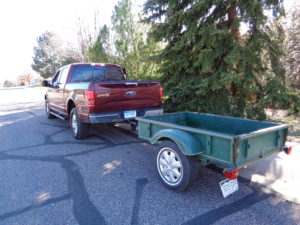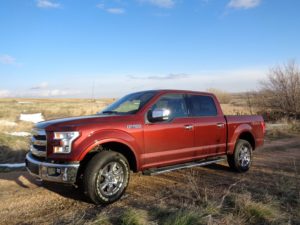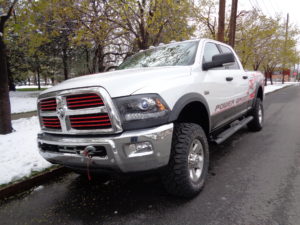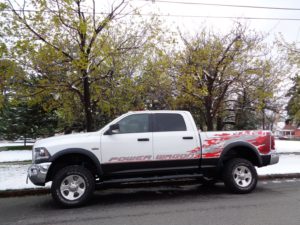
“Half-ton or three-quarter?” once was the major distinction between pickup trucks.
That was long ago. Today, the 2016 Ford F-150 4X4 SuperCrew parked at my doorstep a while back tops out, I believe, a recent rush of innovative truck features.

It’s Ford’s Pro Trailer Backup Assist system, which automatically backs a truck and trailer into tight parking space. “Keep your hands off the steering wheel,” the system tells the driver, whose participation is simply turning a knob, keeping an eye on the rearview camera screen and occasionally braking.
The trailer tracking system has been developed over the past 10 years by Ford engineers using camera technology; since its introduction this year, Ford officials say more than half the purchasers of F-150s are opting for the backup assist feature.
In earlier truck highlights, new light-duty diesel power showed up in the Ram 1500, GMC Canyon/Chevy Colorado and the redesigned Nissan Titan, along with an Atkinson-cycle 3.5-liter V-6 in the Toyota Tacoma.
And last week, a big, brawny 2500 truck with Hemi V-8 drew attention; the 12,000-pound Warn electric winch’s cable and hook hanging from an opening in the center of the front bumper identified it as a Ram Power Wagon.

We drove the 2016 Ram on snowy Sunday from Greeley in to north Denver to Paxia’s for a birthday celebration for Dick Johnson, hosted at the restaurant by his son and daughter-in-law, Dan and Jamie Johnson. Dick and I worked side-by-side on the Denver Post city desk more than 40 years ago.
The Ram Crew Cab is roomy and comfortable. Rolled up into a bag beneath one of the rear seats is a 12-foot-long electronic cable and remote for plugging into and engaging the front-end winch for stringing out and retrieving or pulling with it.
The Power Wagon 4X4 offers locking front and rear axles and a floor-shift manual transfer case for locking it into four-wheel drive. The 6.4-liter Hemi engine produces 410 horsepower and 429 lb.-ft. of torque and is mated to a 6-speed automatic transmission, with 4.10 rear axle gears. As powerful as it is, the V-8 is noticeably smooth. For some 4-by-4 testing, and the drive to Denver and back, the Ram averaged 13.1 miles per gallon.

One thing that didn’t add up for me was when I counted 10 cupholders in the front seating area, with two more in the back. One would be enough for me; two, possibly three, for Jan.
Adding premium cloth bench seat, 8.4-inch touchscreen navigation, backup camera, remote start and RamBox cargo to the Power Wagon’s base price of $50,715 brought its sticker total to $57,480.
That was barely more than the Ford F-150’s price of $55,955. Of importance to this F-150 is that it is equipped with a 5.0-liter V-8 engine with hardened valves, valve seats, pistons and piston rings so it can operate on natural gas, propane or gasoline through separate fuel systems.
To test the F-150’s trailer-backing feature, son-in-law Bill Allen brought to my house a small trailer for hookup to the Ford.
To coordinate the new system, after hitching the trailer, a sticker provided by Ford is placed on the tongue of the trailer. Measurements are taken for distance from the license plate to center of ball hitch, for the horizontal distance from ball hitch to sticker, from rearview camera eye to sticker, from tailgate to center of the trailer axle. The distances then are recorded into an information display up front in the cabin. The truck is driven forward a short distance to calibrate the system.
The simplicity of the system is turning a knob to indicate direction while backing, left for left, right for right, instead of the reverse method necessary with old-style mirrors. A touch of the steering wheel when backing with the new system will disengage it.
The Ford’s overall fuel mileage was 18.8.